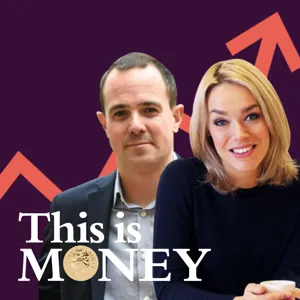Podcast Summary
Oil industry underperforms S&P 500, faces competition from electrification: The oil industry underperformed the S&P 500 from 2010 to 2020 and faces significant competition from electrification, particularly in the transportation sector. Long-term investors should consider the disruption this trend could bring and carefully evaluate funds' actual holdings and strategies to avoid greenwashing.
While the oil and gas sector had a surprising comeback in 2020, historically it has underperformed the broader S&P 500 index. Looking forward, the industry faces significant competition from electrification and clean energy, particularly in the transportation sector where electric vehicles are becoming increasingly popular. For long-term investors, it's crucial to consider the disruption this trend could bring and whether holding a long position on oil is a sound investment strategy. The recent surge in oil prices and profits might be tempting, but it's essential to separate the short-term allure from the long-term outlook. As Zach Stine, co-founder and CEO of Carbon Collective, pointed out, the industry underperformed the S&P 500 from 2010 to 2020. With half of oil's customers being cars and trucks, the shift towards electric vehicles poses a significant threat to the industry's market share. Greenwashed funds, which claim to be sustainable investments but are not, can be misleading for investors. An example given in the discussion was a fund that invested heavily in oil and gas companies but marketed itself as sustainable due to its small allocation to renewable energy. It's crucial for investors to understand the nuances of sustainable investing and to carefully evaluate funds based on their actual holdings and strategies.
ESG frameworks can be confusing with conflicting priorities within industries: Align investments with scientific requirement to invest in climate solutions and avoid industries that cannot exist in a post-carbon world
The use of Environmental, Social, and Governance (ESG) frameworks for investing can be confusing due to their focus on multiple risk areas and the potential for conflicting priorities within a single industry. For instance, a fossil fuel company could have strong social metrics or good governance, which could outweigh its negative environmental impact. However, it's important to note that the continued investment in fossil fuels contradicts the scientific consensus that we need to invest $5-$9 trillion per year into climate solutions and stop expanding fossil fuel industries. To evaluate investment options, consider aligning your investments with this scientific requirement and avoid industries that cannot exist in a post-carbon world, such as oil and petrochemicals. Instead, invest in companies that contribute to climate solutions.
Engaging with companies in a post-carbon world: Focus on long-term investments in companies whose core businesses can exist in a carbon-neutral future. Utilities, despite high carbon emissions, are crucial for decarbonization and should be engaged with economically. Question advisors on ESG ratings and funds alignment with long-term goals and sustainable future.
Engaging with companies whose core businesses can exist in a post-carbon world is crucial for a sustainable investment strategy. These companies, whether they have sustainability goals in place or not, form the Engageable Universe. ESG (Environmental, Social, and Governance) investing often focuses on how a company operates, but our goal is to build portfolios for long-term goals like retirement. Utilities, despite being significant carbon emitters today, are essential for decarbonization and must be engaged with economically. The recent report shows that it is now cheaper to shut down and replace coal plants with renewable energy. Therefore, it's important to question financial advisors about their justification for using specific ESG ratings and funds and how they align with a theory of change or a goal to make more money. This approach ensures that investments make sense for the long term while also contributing to a more sustainable future.
Investing in Climate Solutions: Morally Correct and Financially Smart: Focus on companies with 50%+ revenue from climate solutions, found in plans like Project Drawdown, IEA, or Rewiring America, for sustainable investing that contributes to climate outcomes and avoids ESG's overly broad term.
Investing in companies focused on climate solutions is not only morally correct but financially smart. To identify these companies, a minimum of 50% of their revenue must come from climate solutions. These solutions can be found in leading plans like Project Drawdown, the IEA, or Rewiring America. By focusing on this narrow type of investing, we can effectively contribute to climate outcomes while avoiding the potential drawbacks of overly broad terms like ESG. ESG was originally invented for diversifying risks, but its use has expanded beyond its original purpose. Sustainable investing, on the other hand, specifically accounts for the secular trend of climate change and builds portfolios that reflect this focus. By understanding these definitions, we can make informed decisions as shareholders and contribute to a more sustainable future.
Sustainable and Impact Investing: Climate Change Benefits and Considerations: Sustainable and impact investing offer long-term benefits from climate change perspective, but potential risks and performance vary. Understand financial goals and market trends to make informed decisions.
Sustainable investing and impact investing offer potential rewards from a climate change perspective, with sustainable funds outperforming common indices and fossil fuels over the long term. Impact investing aims to make a tangible difference in the world, while values-aligned investing allows for a customized approach. However, it's important to consider the potential short-term risks and the fact that sustainable investing may underperform or outperform the market depending on the financial goals and belief in broader secular trends. The renewable energy sector, for example, had a strong performance in 2020 but gave back some gains in the following years. Ultimately, the decision to invest sustainably or impactfully should be based on a clear understanding of one's financial goals and beliefs in the long-term trends of the market.
Politics and sustainable investing: A complex and evolving issue: Political landscape surrounding ESG is uncertain, with potential financial losses for funds due to pushback, but institutional investors argue it's their duty to consider ESG risks, and future depends on how trends and debates unfold
The intersection of politics and sustainable investing, specifically ESG, is a complex and evolving issue. While trends like the decline of battery prices and the rollout of virtual power plants offer opportunities for future investment, the political landscape surrounding ESG is uncertain. The recent pushback against ESG investing, led by the political right, could result in significant financial losses for funds, as seen in the analysis of the anti-ESG bill in Indiana. The lack of clear definition and representation for ESG has made it an easy target for criticism, with some viewing it as an imposition of values. However, institutional investors argue that it is their fiduciary duty to consider environmental, social, and governance risks. The contradictory trends in the sector, such as the success of the fossil fuel divestment movement and the continued investment in fossil fuels by oil and gas majors, add to the confusion. Ultimately, the future of sustainable investing will depend on how these trends and political debates play out.
Targeting businesses with capacity to adopt renewable energy: Focus on companies with potential to decarbonize, generate significant environmental impact, and potentially better financial returns.
Instead of focusing on engaging with companies that are heavily reliant on fossil fuels and asking them to change their business models, it's more effective to target those businesses that have the capacity to adopt renewable energy and electrify their fleets. By pressuring these companies to take clear decarbonization steps, we can make a significant impact on the environment while also potentially generating better financial returns. Carbon Collective plans to launch an engagement strategy this year to put this approach into action. Additionally, it's essential to develop a clear thesis and strategy around the long-term financial benefits of investing in sustainable businesses, rather than viewing it as a niche or charitable pursuit. By making this shift, we can change the narrative around sustainable investing and attract more investors who are motivated by both financial gains and environmental impact.
Explore Carbon Collective for sustainable investing insights: Learn about Carbon Collective's investment strategies, engage with their co-founder, and discover their approach to sustainability investing.
If you're interested in sustainable investing, you can explore Carbon Collective as an option. This organization offers a platform where you can learn about their investment strategies, understand their approach to creating change, and even engage directly with their co-founder, James Regalinski. By visiting carboncollective.co, you'll gain insights into how they build their portfolios with a focus on sustainability. This could be a valuable resource for those looking to make a positive impact with their investments, whether at work or individually.






![Eric Mandelblatt - Investing in the Industrial Economy - [Invest Like the Best, EP. 266]](https://www.podcastworld.io/podcast-images/invest-like-the-best-with-patrick-o-shaughnessy-3pmywn1q.webp)